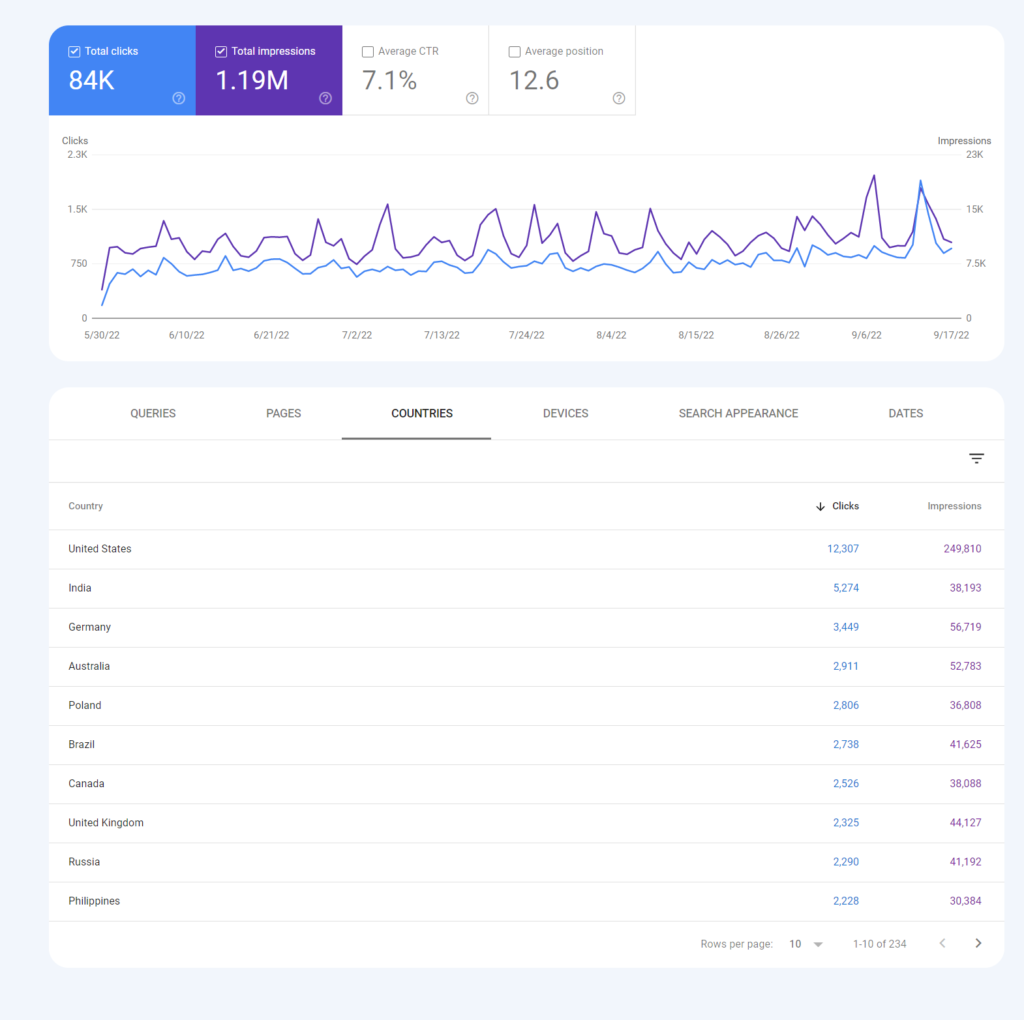In this case study, I will be discussing how I was able to take a web app from scratch and grow it to receive 100,000 monthly visitors within just under 3 years. The web app I built was designed to help gamers find their ping before joining game servers. I developed the app as a fun project, with the goal of providing a useful service to the gaming community.
Through a combination of SEO strategies, marketing efforts, and continuous improvement, I was able to successfully grow the web app and attract a large audience. In this case study, I will detail the steps I took to achieve this growth and share the lessons I learned along the way.
Initial Setup
- I began the development process by deciding on the technologies I would use to build the web app. I chose to use PHP as the backend language and JavaScript for the frontend.
- I wanted to ensure that the design of the app was visually appealing and easy to use, so I decided to use Bootstrap 4 as a framework to help with this.
- Simplicity was a key focus for me throughout the development process. I wanted to create an app that was easy to understand and use, even for those who were not particularly tech-savvy.
- To start, I began by setting up the basic structure of the app, including the database and the main pages.
- Next, I implemented the core functionality of the app, which involved making API calls to game server end points to retrieve ping information and displaying it to the user.
- I also focused on optimizing the app for speed, as I knew that this was an important factor for users. I implemented various techniques such as caching and minimizing the number of API calls made to ensure that the app was as fast as possible.
- As I progressed through the development process, I made sure to test the app extensively to ensure that it was working correctly and that there were no bugs or issues.
- I also spent time fine-tuning the design of the app, making sure that it was visually appealing and easy to navigate.
- Once the core functionality of the app was complete, I began working on additional features such as the ability to save favorite servers and view historical ping data.
- Finally, I focused on ensuring that the app was optimized for SEO by implementing proper tags, titles, and descriptions, and by creating high-quality content to attract users and improve search engine rankings.
Actions Taken
- One of the first things I did to improve the SEO of my web app was to ensure that all of the pages had unique and descriptive titles and descriptions. These tags help search engines understand the content of each page and determine how relevant it is to a particular search query.
- I also made sure to include relevant keywords throughout the content of the app, both in the text and in the tags and metadata. This helped search engines understand the content of the app and improve its ranking for relevant searches.
- I created a sitemap for the app and submitted it to search engines to make it easier for them to crawl and index the app’s pages.
- I built high-quality backlinks to the app from other websites in order to improve its authority and ranking in search results.
- I implemented proper schema markup on the app’s pages to provide additional context to search engines and improve the appearance of the app’s listings in search results.
- I made sure to optimize the app’s images and other media by including descriptive file names and alt tags.
- I ensured that the app was mobile-friendly and had a fast loading speed, as these are important ranking factors for search engines.
- I set up Google Analytics for the app and regularly checked the data to understand how users were interacting with the app and to identify areas for improvement.
- I regularly published high-quality content on the app’s blog to attract users and improve the app’s ranking in search results.
- Finally, I kept an eye on the app’s search engine rankings and made adjustments to the SEO strategy as needed to continue improving its performance.
Results
- One of the most notable results of my SEO efforts was that the web app began ranking for competitive keywords, which helped it attract a large audience of users.
- Despite the fact that I am not currently fully focused on the website, it has continued to perform well and attract a consistent level of traffic.
- In addition to the web app, I also developed an Android app for the service, which gained some traction and helped to drive even more traffic to the website.
- Currently, the website averages around 100,000 visitors per month, with around 60% of that traffic coming from Google organic search.
- The app has received positive feedback from users, with many praising its simplicity and usefulness.
- Overall, the combination of SEO strategies and marketing efforts has been successful in driving significant traffic to the web app.
- The app has become a valuable resource for gamers looking to find their ping before joining game servers, and has helped to establish it as a trusted and reliable source of information.
- In addition to the traffic and user engagement the app has received, it has also generated a significant amount of revenue through advertising and other monetization efforts.
- Despite the fact that I am not currently fully focused on the website, it continues to perform well and attract a large and engaged audience.





